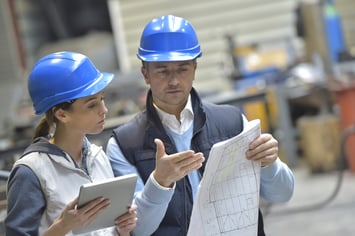The Impact of Green Steel Startups on the Global Steel Industry
Global steel is an industry that has tendrils that permeate deep within society. However, much like many ingrained industries and markets, the world is evolving around it. Green steel startups are poised to change how we manage and benefit from steel - but to what impact?

Global Steel in Focus
Across five decades of intensive production, global steel has expanded three times. The clue is mainly in the metal’s near-endless versatility. For resilience, cleanliness, and support, steel is an enduring choice.
However, it hasn’t been without its pitfalls. The US, for example, scaled back operations over the years, cutting jobs in steel nationwide. However, in India and China, current trends show an increase in production. However, no one is too certain how long this increase will persist.
Currently, a significant issue facing global steel is sustainability. For decades, steel mills, on the whole, have expended huge waves of carbon and energy. With society shifting towards a greener, more sustainable focus, the future is renewable.
However, this needs to be offset with the ability to meet demand. The global economy is dependent on steel, and regardless of the future of production, we require its presence. Thankfully, steel’s near-limitless potential for recyclability ensures sustainability to a degree.
Hyper-efficient new methods of working with steel ultimately led to curtailment in the US. As more international markets open up to steel manufacturing, imports were all but a certainty. China’s already firm position as an efficient, cost-effective manufacturer of various materials has grown stronger.
Therefore, while demand is never likely to stop growing, the steel industry needs evolution. Modern steel production, for example, will likely need to move more and more away from physical labor towards machine automation. However, these movements carry risks, and what’s more, they require careful planning.
Startups Disrupting the Industry
Despite its enduring presence, steel production is at risk of stagnating if it does not catch up with demand. Therefore, startups working to change the industry primarily focus on boosting efficiency, productivity, and sustainability. What’s more, many ventures are developing ways to help produce more bespoke steel solutions for specific needs.
A great example is NanoStal. Based in Poland, steel entrepreneurs on board the venture work to develop unique heat treatments. Their customizable heat solutions can help manufacturing services develop specific fabrications more efficiently. That, ultimately, is likely to benefit both the customer and the manufacturer.
We also need to consider the real impact of 3D printing and engineering on global steel. 3D printing has effectively taken much need for intensive design and production away from the assembly line. It’s also helping to drive down time to get prototypes off the blueprints and into the real world.
We, therefore, need to look at ventures such as RE3DTECH, based here in the US. RE3DTECH specializes in printing metal components as an alternative to standardized steel production. Effectively, their components and parts mimic steel in their toughness and ease of use.
Therefore, it may be possible that 3D printing in-house removes the need for steel outsourcing. It may be a gradual change. However, it could alter the supply and demand system we’ve known for decades.
Disruption also lies in greener thinking. As mentioned, global steel is moving more and more towards renewability and environmental impact. While steel is already recyclable, its production burns carbon into the atmosphere to a staggering extent. It’s why firms such as Boston Metal are working to make steel cleaner.
Boston Metal’s Woburn-based enterprise provides the facility to manufacture steel without emissions. Specifically, the engineers at BM work with Molten Oxide Electrolysis. For the everyday investor, this means they work to remove ore from iron - and the need for heavy blast fires. The aim is, of course, to reduce carbon footprints to zero.
The steel industry is a sleeping giant that’s continued to persist on its necessity. However, as we can see, many innovators are keen to make a change or two. What might this look like in the years and decades ahead?
What’s the Real Impact?
It’s safe to say that demand for steel and manufacture will not dissipate or dry up. Instead, several disruptions heading the industry’s way will force it to change. That said, due to global challenges in 2020, there was a slight decrease in demand by over 6%. However, this is set to rebound - at least, according to industry experts.
As mentioned, moving wider steel production away from the traditional mills and lines towards 3D printing will have significant impacts. 3D printing steel parts and components could mean cutting days out of production time. This could increase revenue and the potential for additional projects in-house.
Not only that, but 3D printing is only part of the broader puzzle when it comes to greener running. It’s thought that steel production generates around 8% of all CO2 in our atmosphere. Therefore, there’s increasing pressure on the industry to change, particularly if climate change targets are to be met by 2030.
Ventures specializing in carbon reduction (by removing ore from the process) could help us meet said targets. It’s noted that several leading steel bodies are already adopting ‘greener’ projects. With political and societal pressures heaping into global steel, a change is only inevitable at this juncture.
The impacts of ventures changing global steel are clear - and they are occurring in the short term. We are moving towards a cleaner, more efficient, and more centralized future. Increasing production out east combined with efforts in the west may lead to a more compacted industry. What’s more, demand is rebounding fast - and there’s pressure piling to help cut back on unnecessary carbon.
Startups aiming to change global steel may seem to have a monumental challenge - but evolution is already on the way. Be sure to take a look at real-time data on steel disruptors via Fundz at your convenience.
SOURCES
https://www.accenture.com/_acnmedia/PDF-40/Accenture-WEF-Steeling-For-Disruption
https://www.visualcapitalist.com/visualizing-50-years-of-global-steel-production/
https://worldsteel.org/steelstory/
https://blog.boydmetals.com/the-past-present-and-future-of-the-american-steel-industry
https://www.startus-insights.com/innovators-guide/5-top-emerging-steel-technology-startups/
https://whowhatwhy.org/economy/business/us-startup-plans-to-clean-up-steel-industrys-act/
https://rmi.org/technology-disruption-in-the-global-steel-industry/
https://www.oecd.org/industry/ind/steel-market-developments-Q4-2020.pdf
https://www.industrytransition.org/insights/g7-green-steel-production
Topic: Green steel startups